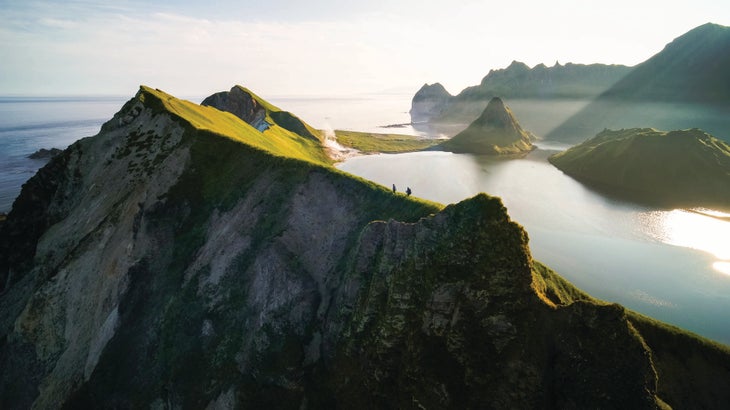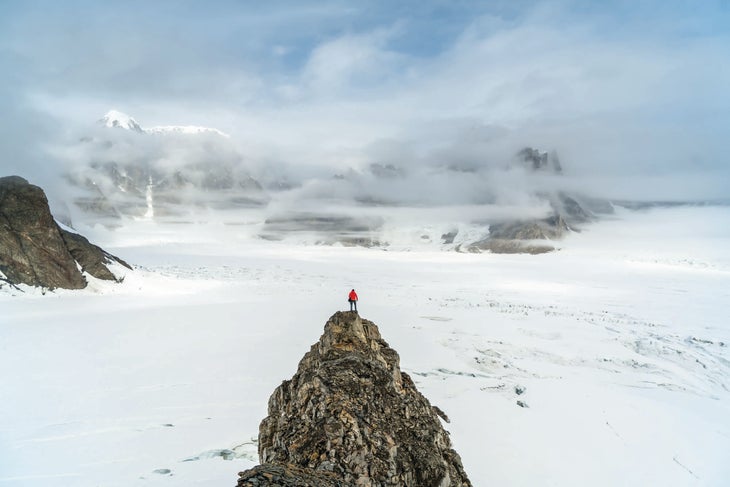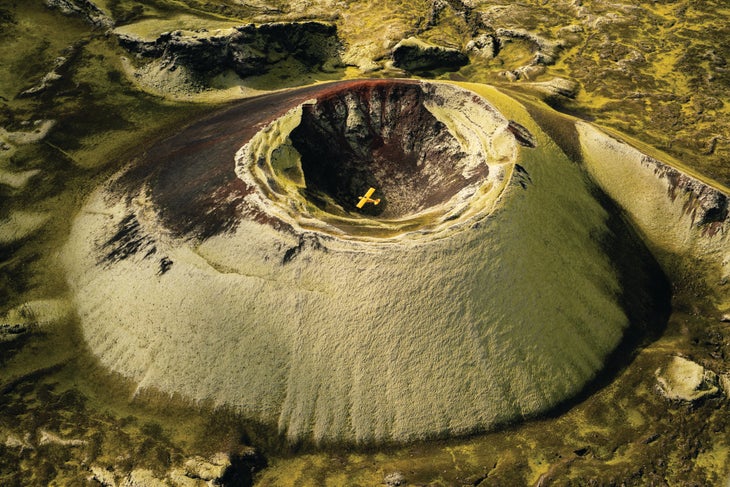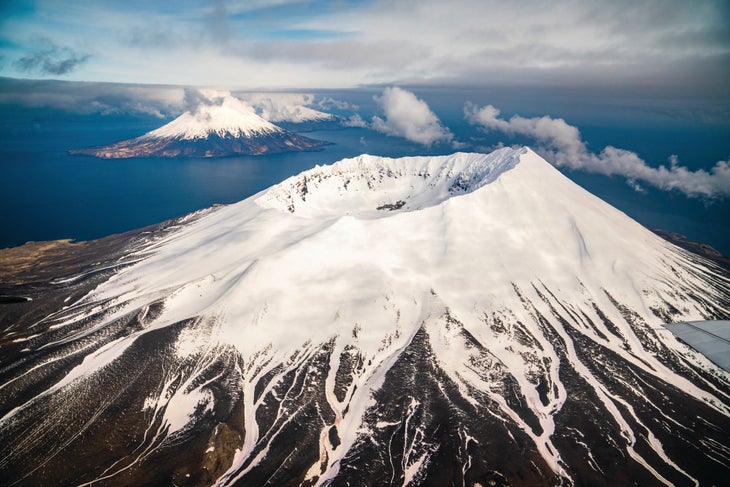Heading out the door? Read this article on the new Outside+ app available now on iOS devices for members! Download the app.
Modern wilderness photography is a paradox. It’s practitioners quest to find and compose the perfect shot in untouched terrain, knowing that their published image could very well undo the remoteness that made the place special. Chris Burkard knows this better than most.
For 8 years, he worked as a photographer for Surf Magazine, a dream job that took him around the globe in search of the perfect wave. But the lifestyle lost its luster when Burkard started to feel his images were selling an adventure fantasy that didn’t exist. Often, lurking just out of frame beside unspoiled-looking beaches were throngs of people and high-rise hotels. Instead of using his skill to make busy places look pristine, he started to crave the pristine places themselves. He wanted the real thing. But that would require a new skillset and an earned understanding that any place worth visiting— any truly remote place left—extracts a toll on the body and mind to reach it.
“If you want to create something memorable, you’re going to have to give something of yourself,” he says.
So began the next iteration of Burkard’s career, the sore shoulders and bruised hips part. But walking the path adds something new to his work, a sense of realism you can trust, even if the images themselves make you wonder if such a place could actually still exist.

Ushishir, Kuril Islands, Russia
The Kuril Islands chain, which stretches from Russia to Japan, is a solitude-seeker’s fantasy. Burkard first discovered the area on Google Earth in search of remote surf. And the more he learned about the interplay between difficulty of access and otherworldly beauty, the more he had to see it for himself. In all, it took 6 years of planning to pull off the trip, traveling to the island as part of a collaboration with climber Renan Ozturk to make a documentary chronicling the threats this rare environment is facing including over-fishing and oceanic pollution.
One of the smaller islands in the archipelago, Ushishir is the remnant of a volcanic caldera that sank below the water’s surface, leaving this grassy speck protruding from the Sea of Okhotsk in the northwest Pacific Ocean. Although Ushishir is just 1.6 miles across, once Burkard arrived after chartering passage on a crabbing boat from a Russian naval base, he found himself lost in the grandeur.

Denali National Park, Alaska
Alaska is the last American frontier, and its scale and severity have called to Burkard for years. Denali is its ground zero. To get this shot, Burkard visited the historic Don Sheldon Mountain House situated just above Ruth Glacier. His objective was to access it by ski plane, then head out on foot in search of glacier-blue ice pools and crevasses. Just outside the hut lies a 400-foot rock outcropping that rises above the glacier like a witch’s hat. Burkard made this image of his travel companion soaking in the majesty of the peaks surrounding him, just at the moment a multiday storm gave way.

Landmannaleið, Iceland
There’s only one place on earth to see a rootless crater like this: Iceland. These depressions are formed by steam rather than lava, and Burkard has traveled to Iceland 43 times over 14 years to photograph the country’s reserve of natural wonders. That compulsion sums up his approach to adventure photography. When asked if it could be classified an addiction, Burkard instead called it a passion, tracing the root to his childhood. Raised by a single mother working hard to make ends meet, Burkard says his work ethic is written into his DNA. He applies that drive to his documentation of extraordinary locations, which is a race with no finish where the thrill lies in the chase itself. “I’ve never been the person who wants to just check off stamps on my passport and go to every country in the world,” he said.
“I tend to go back to places that mean something to me in hopes that I can create a legacy there because I love the culture and I love the people and I love the environment.”
This image was shot as part of a series 7 years in the making, documenting Iceland’s fragile highlands river system, which is being dammed to support energy export for aluminum smelters.

Aleutian Islands, Alaska
There is nothing else like the Aleutians. The archipelago extends like a swooping tail from mainland Alaska into the Bering Sea, and is comprised of 64 islands and uncounted islets. Burkard received a grant to conduct an aerial survey of the islands from Conservation International. The Aleutians are virtually untouched by tourism, but Burkard isn’t naïve about how his captivating imagery can fundamentally change a place by piquing curiosity. This is why he uses his photography, including this image shot from a bushplane, as a tool to instill a sense of wonder about the places and issues he cares about. But he doesn’t see himself as a gatekeeper, withholding exact locations as many photographers choose to do in the name of protection.
“As photographers we should be allowing people to go out and experience these places just as openly and equally as we can,” he says. You can’t complain about the environment not being supported by votes and dollars, but then also complain about over-tourism in certain locations—nature is a gateway drug to conservation.”